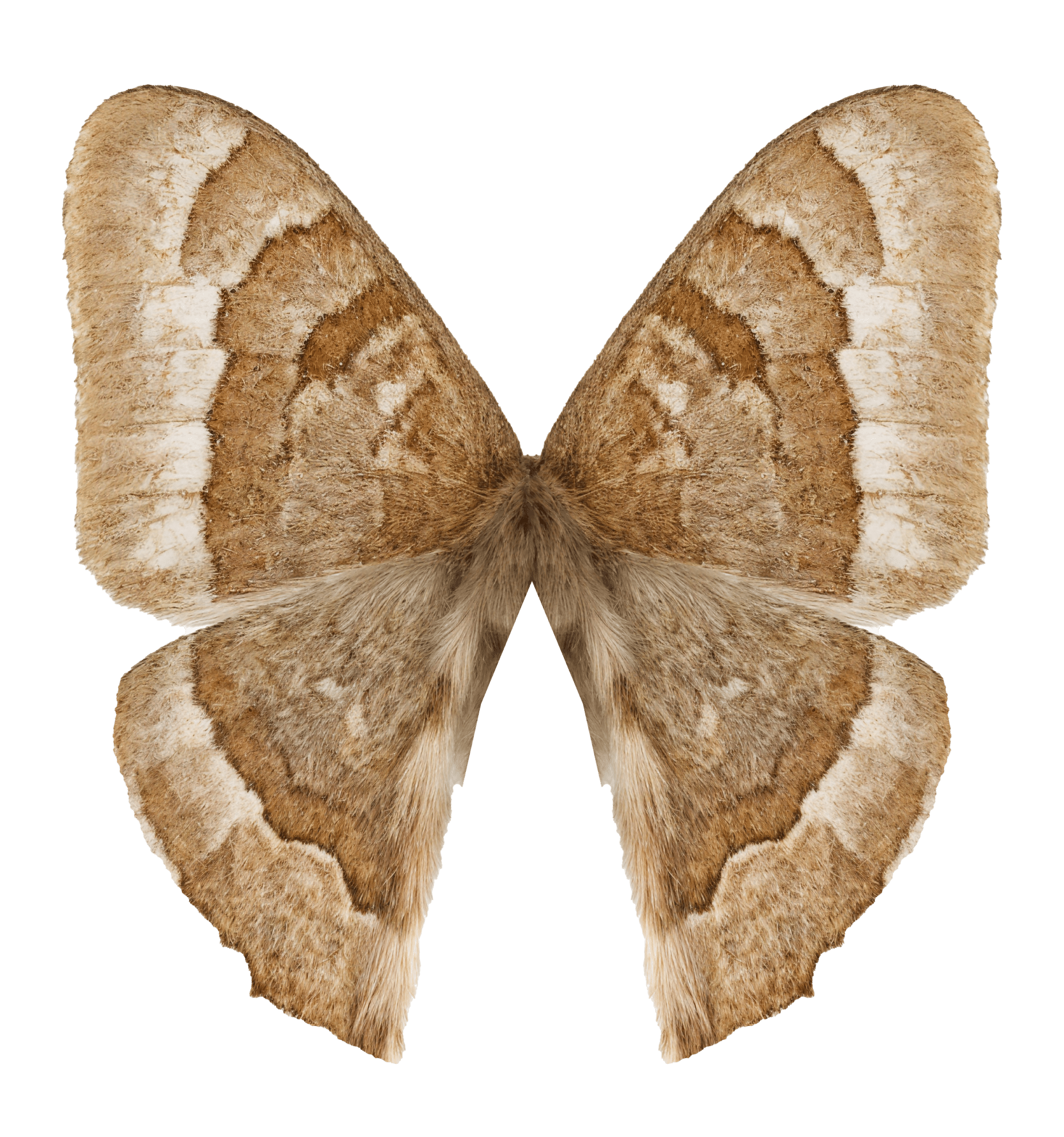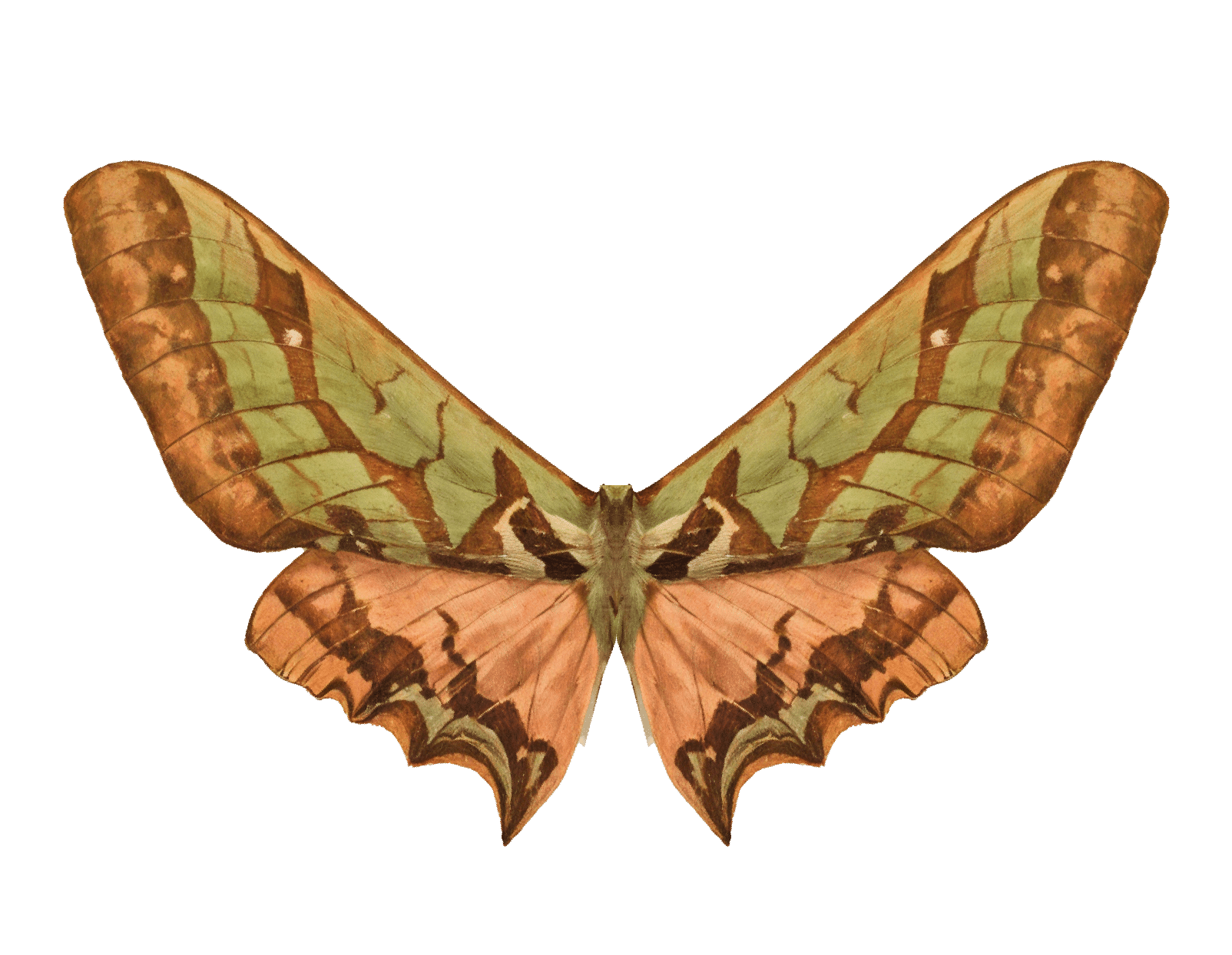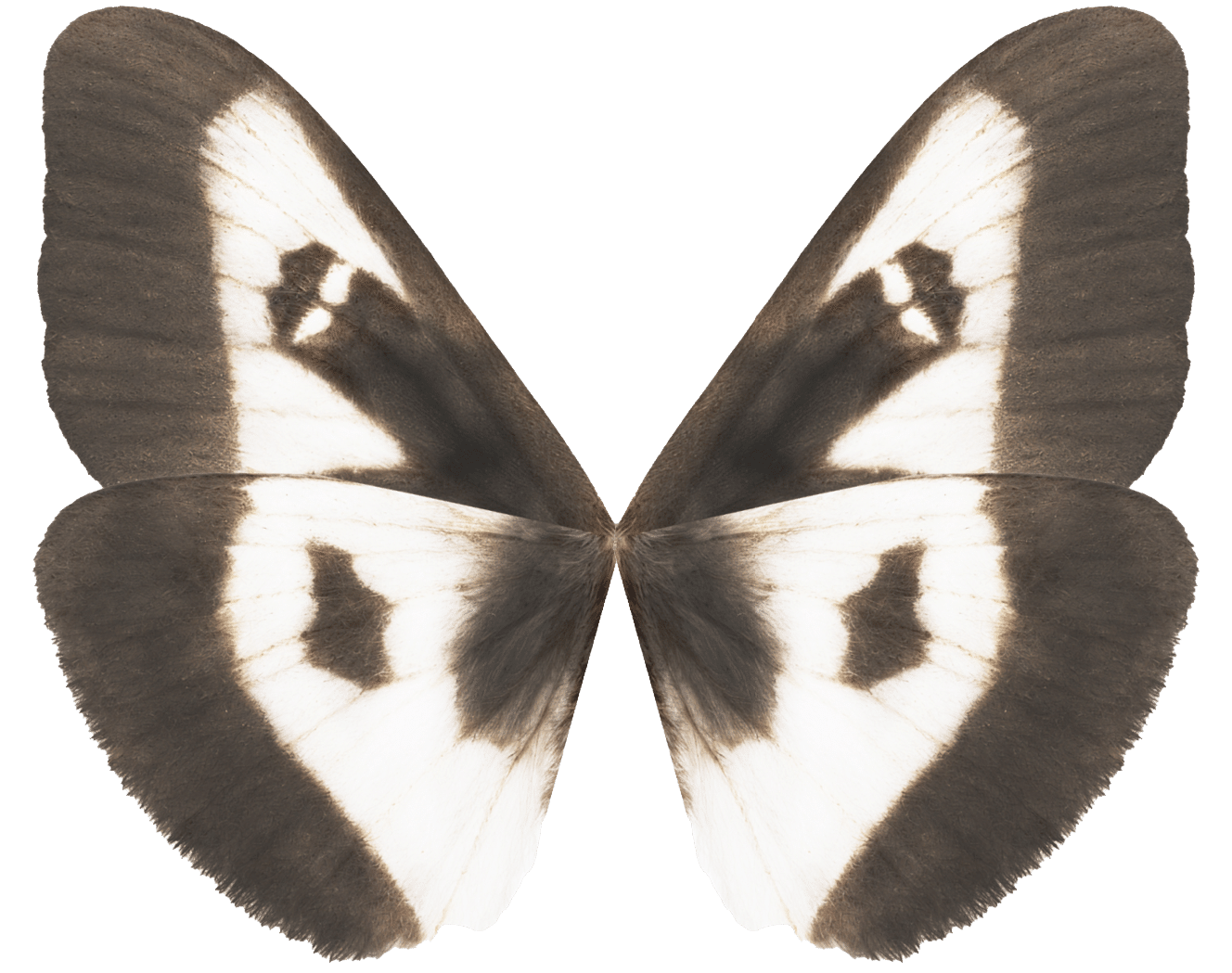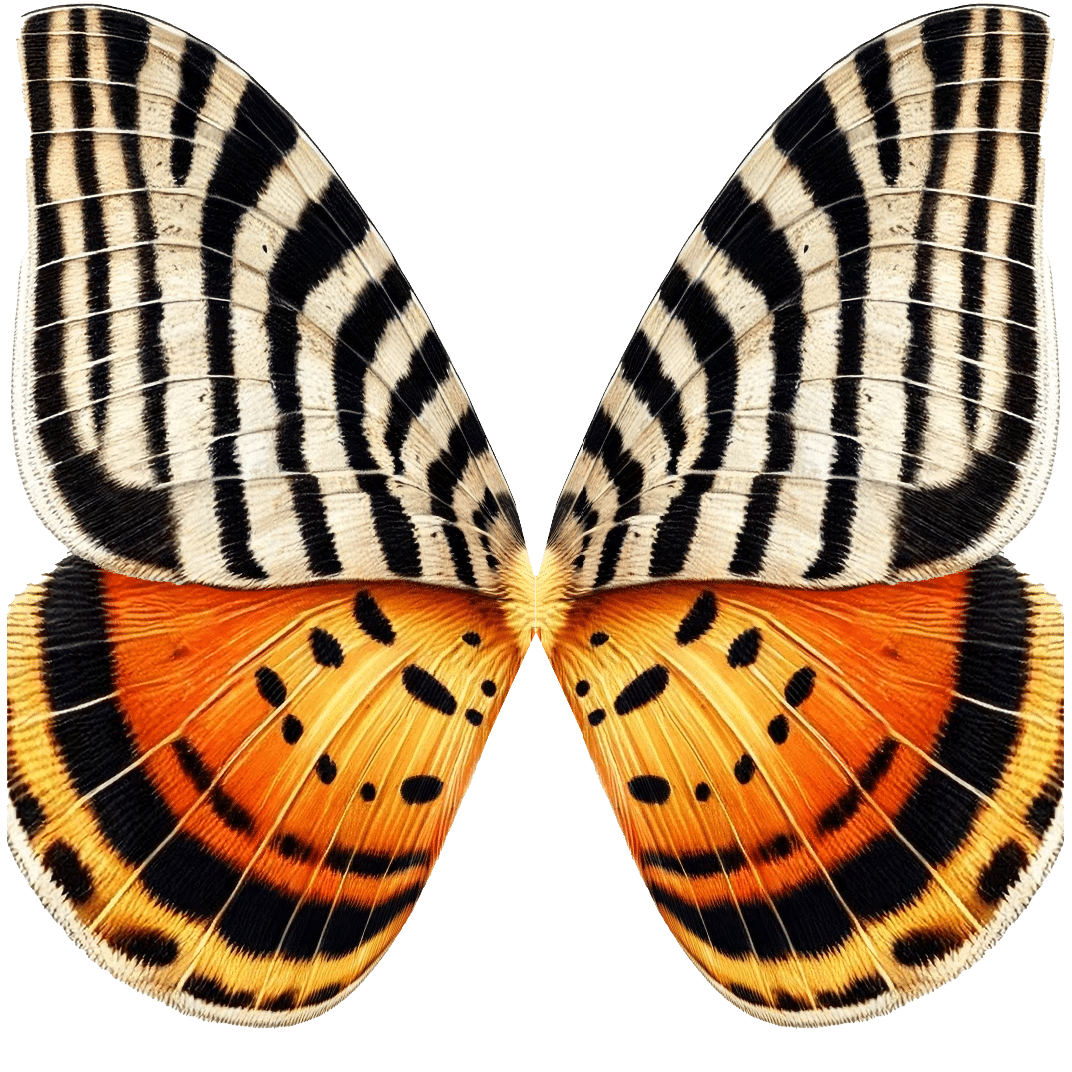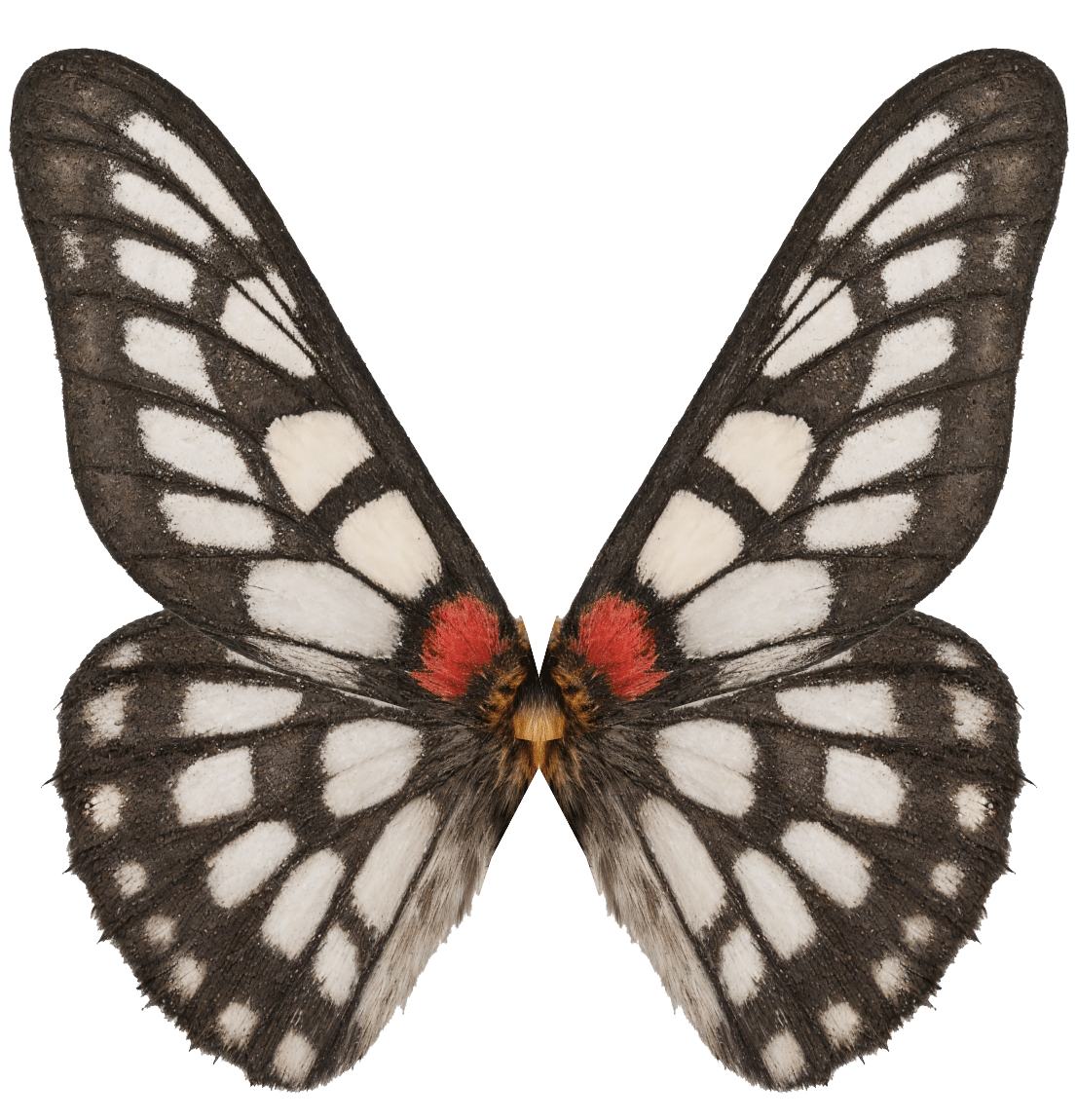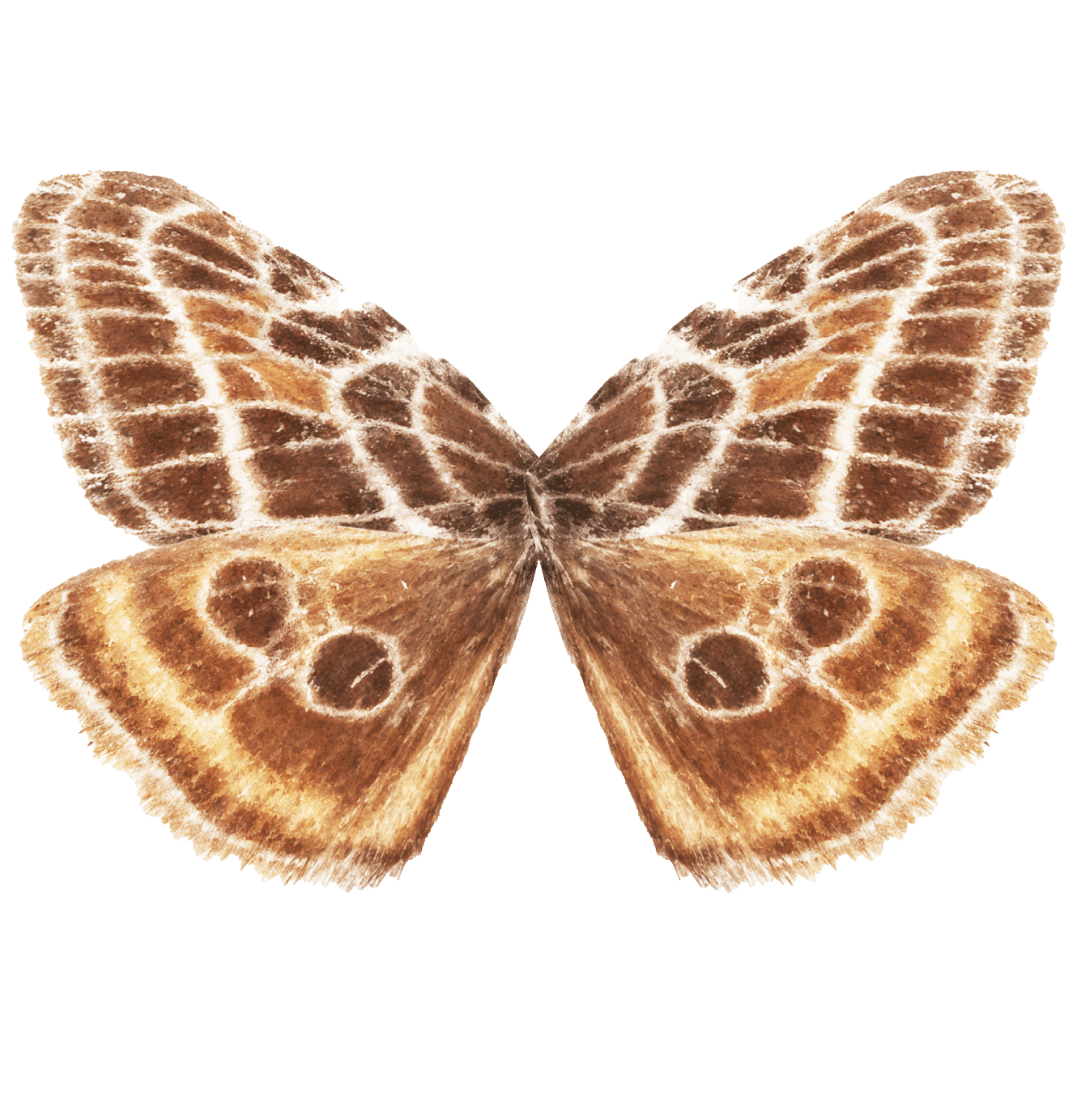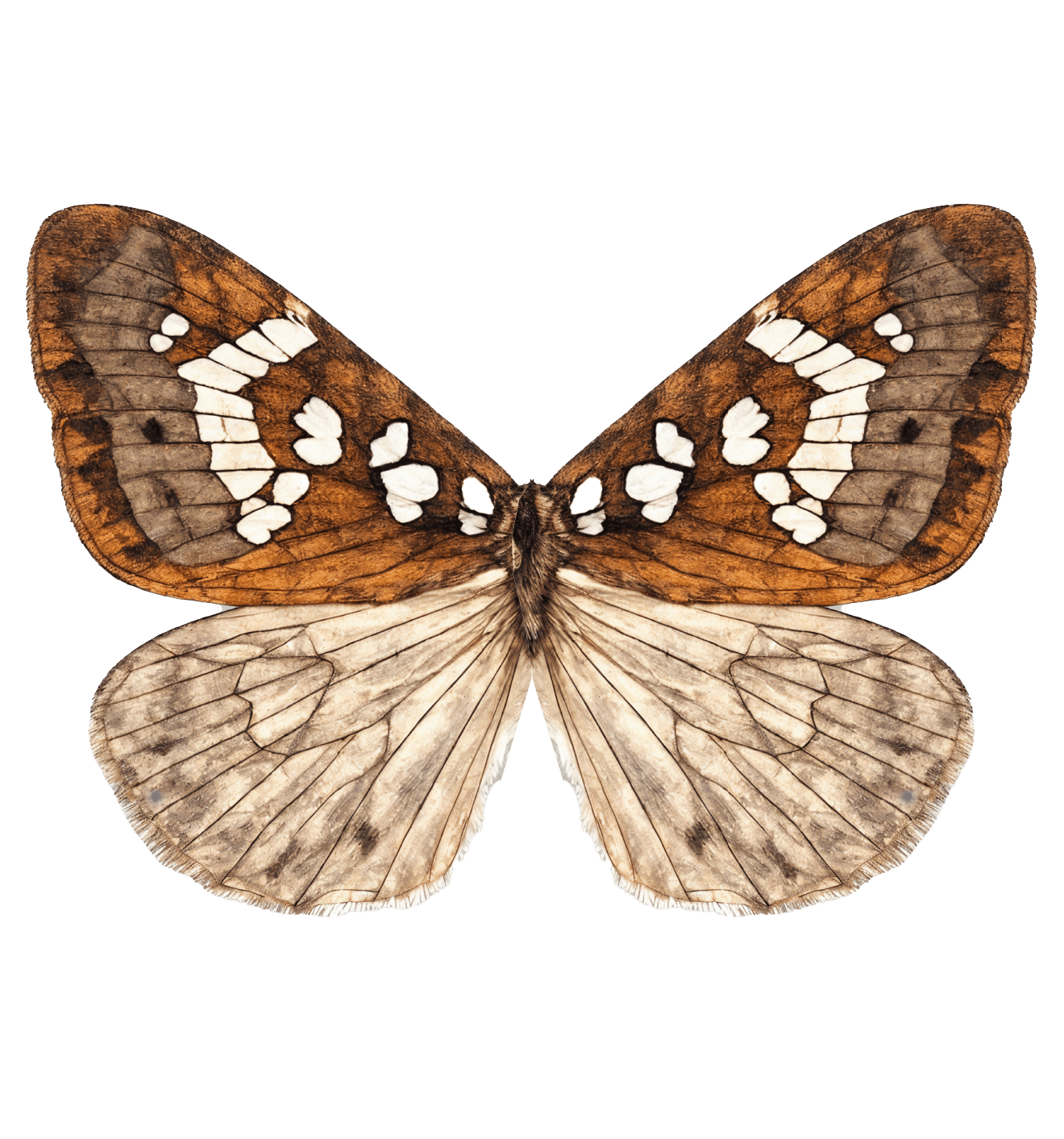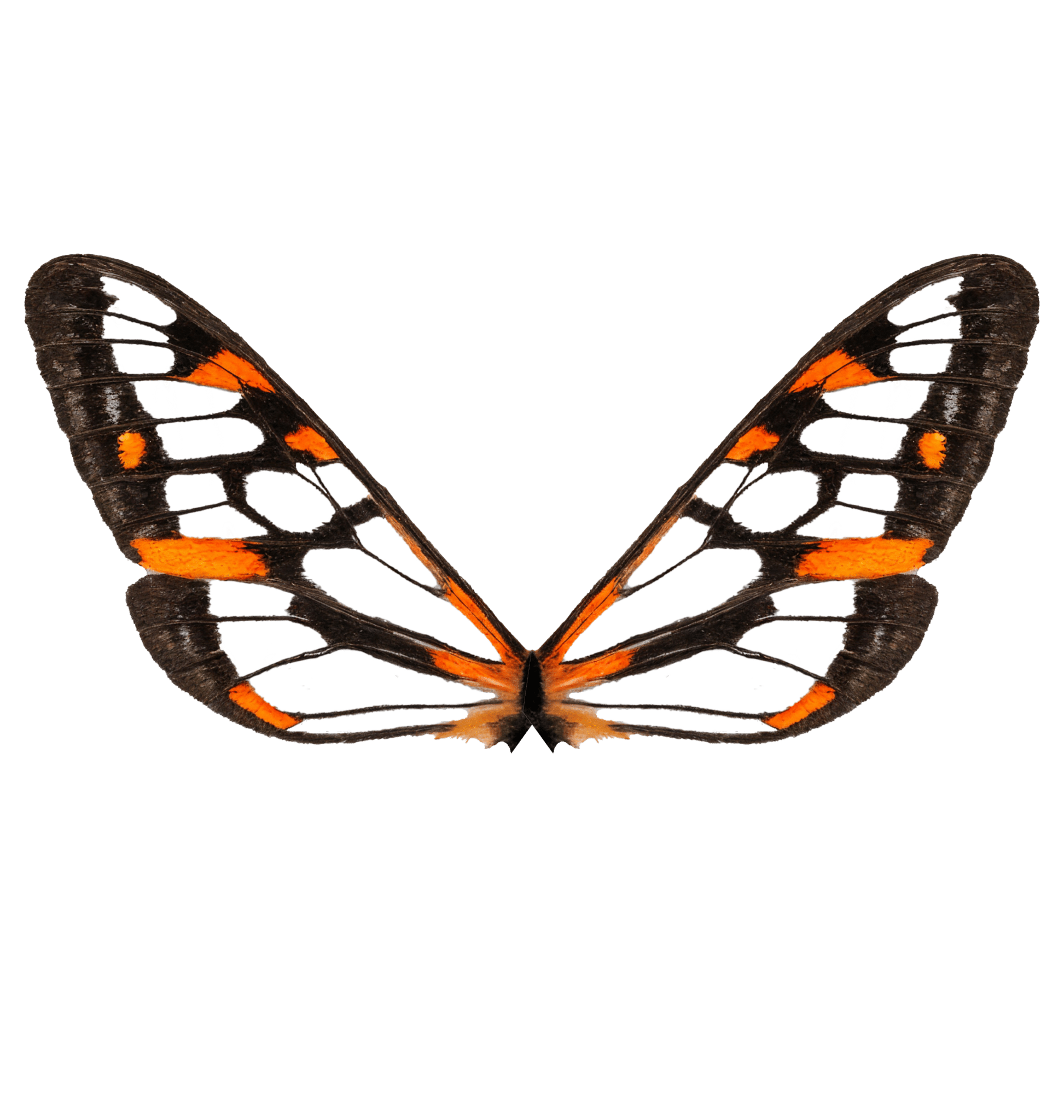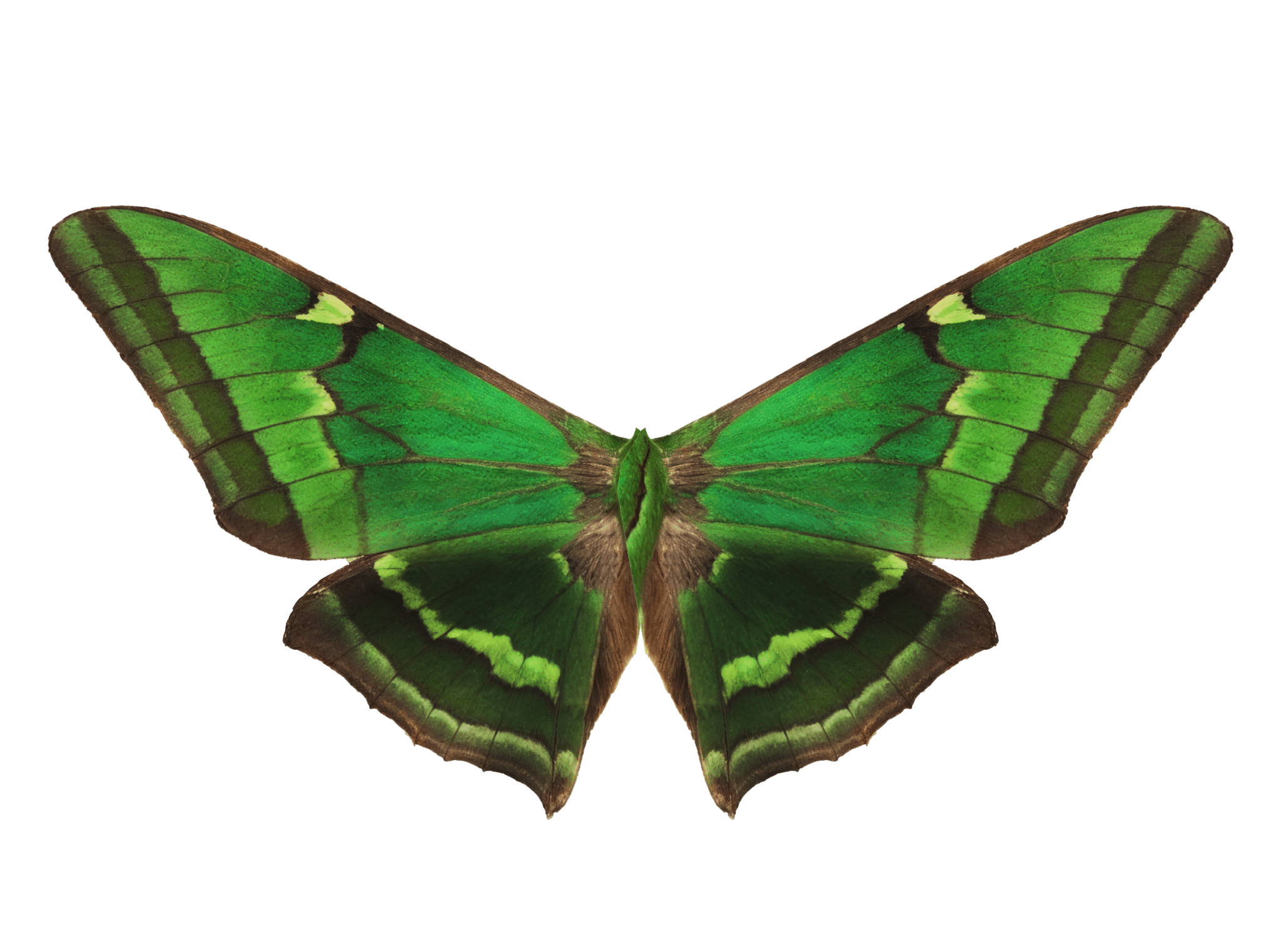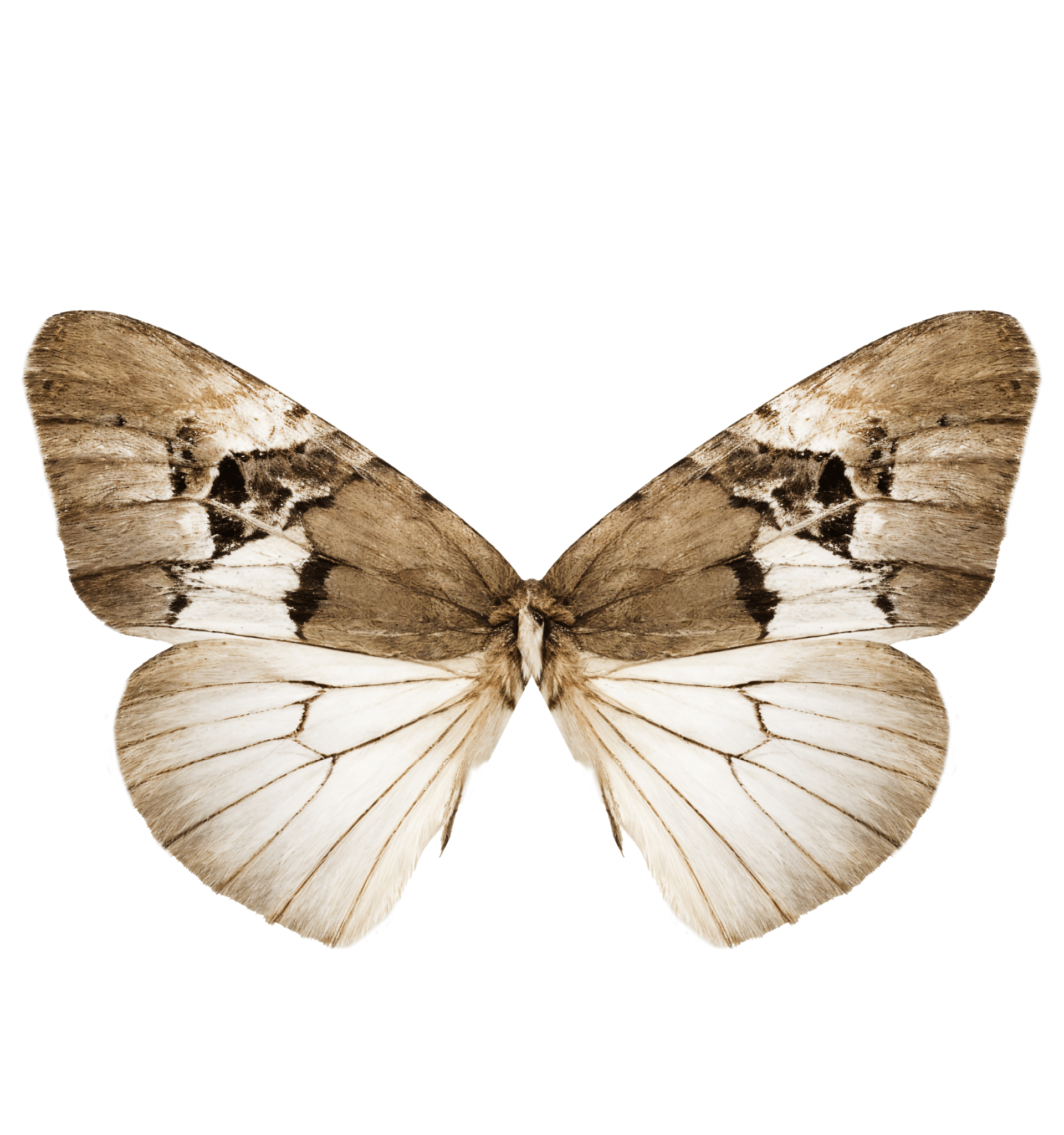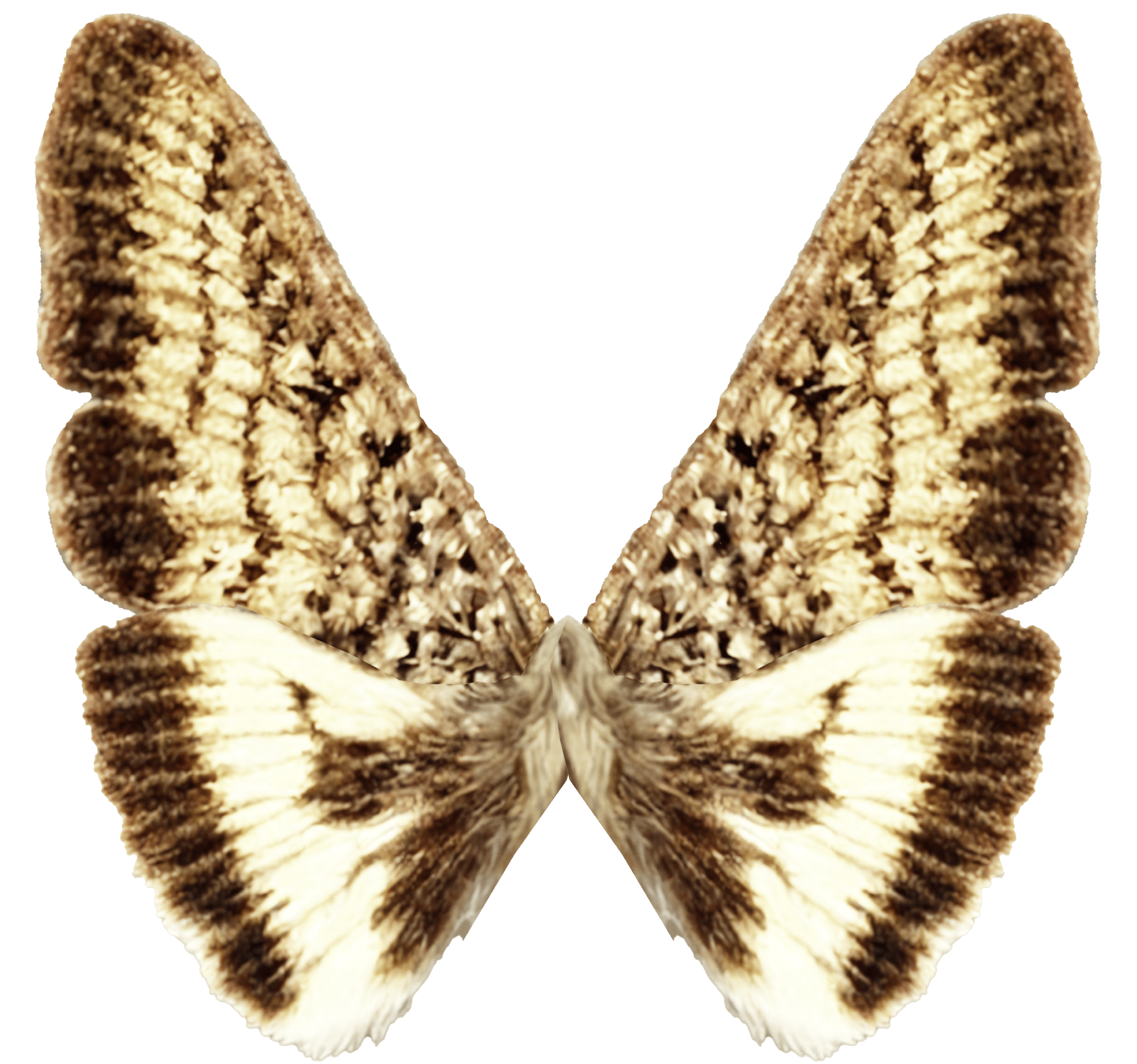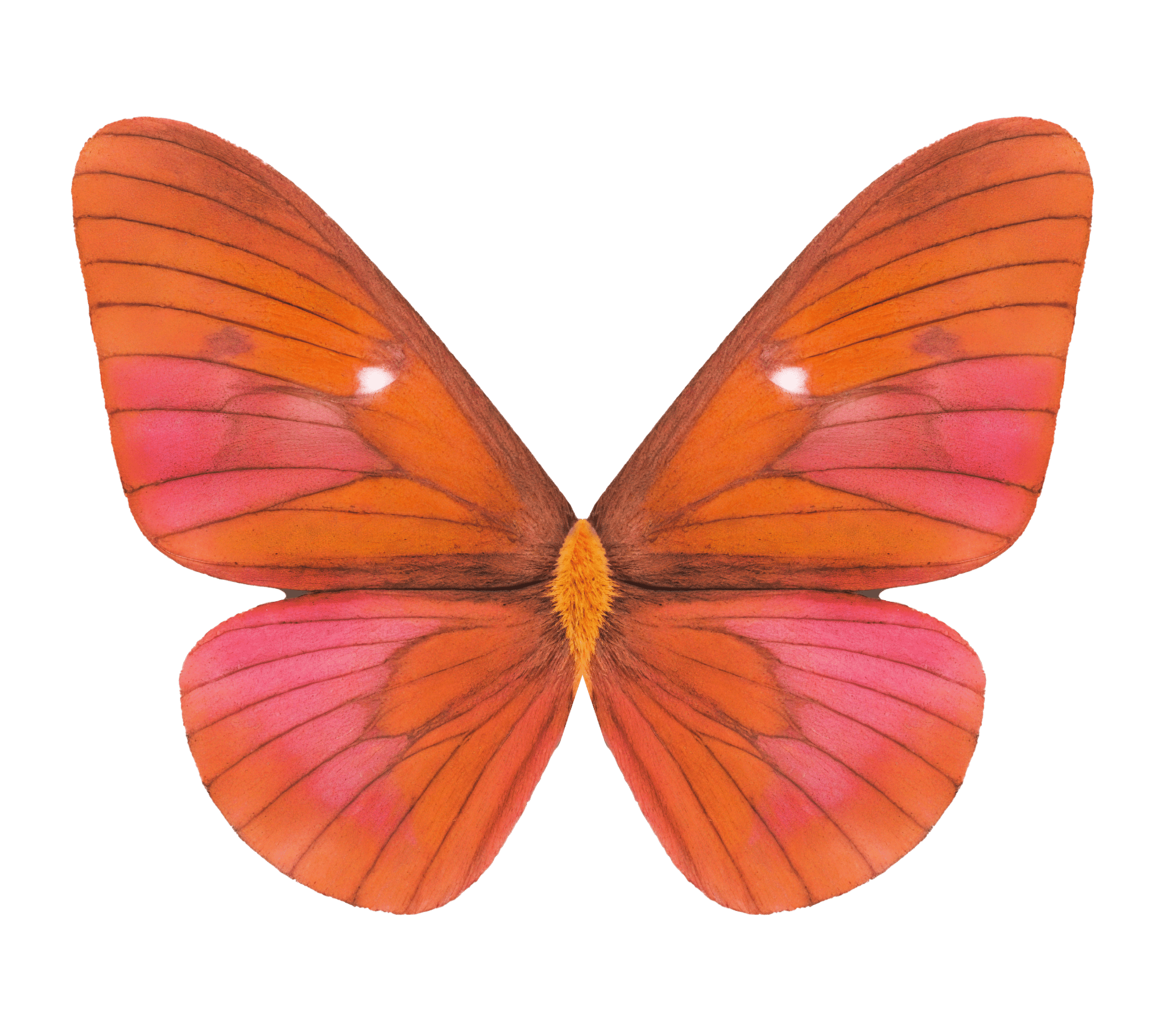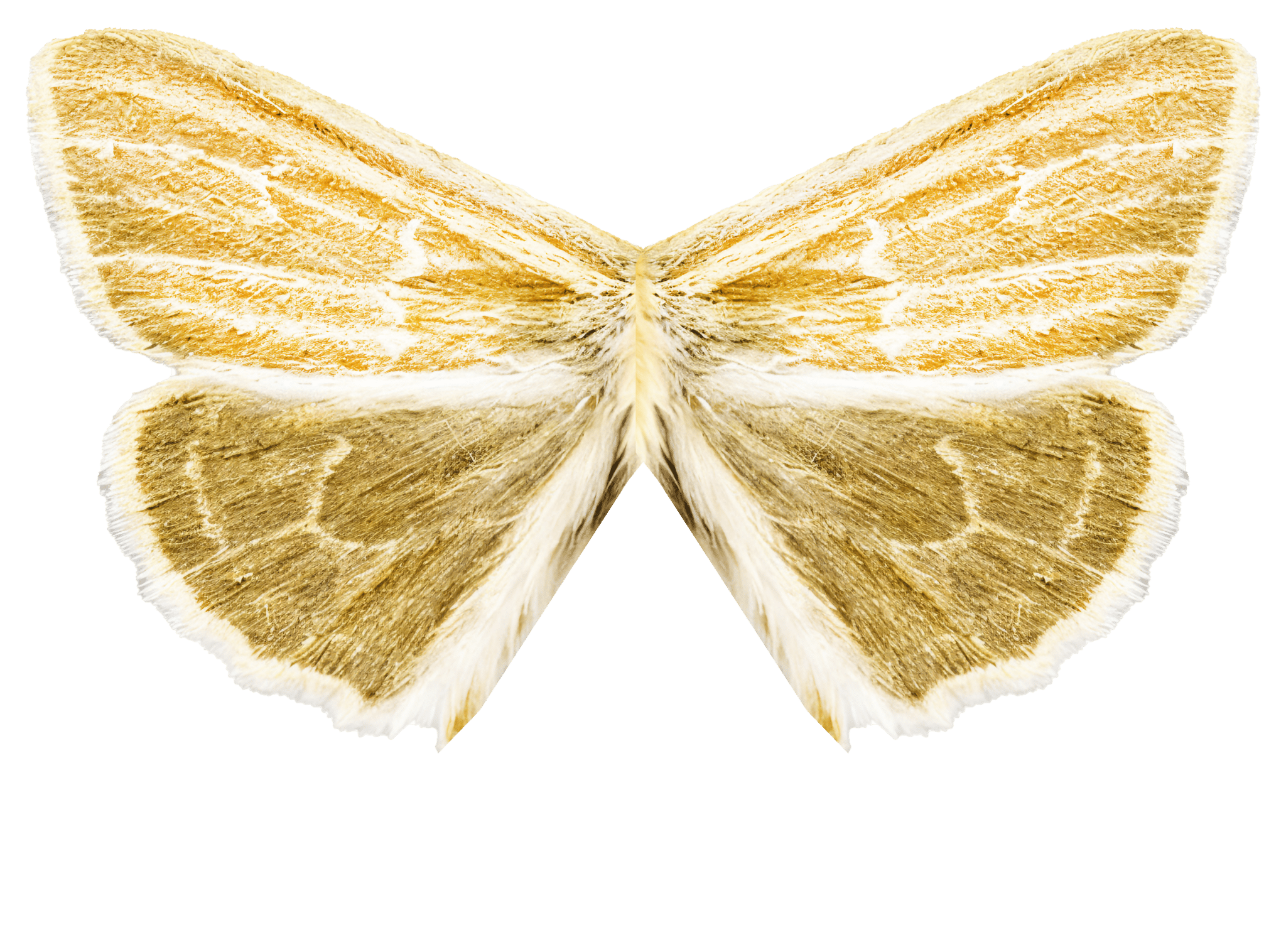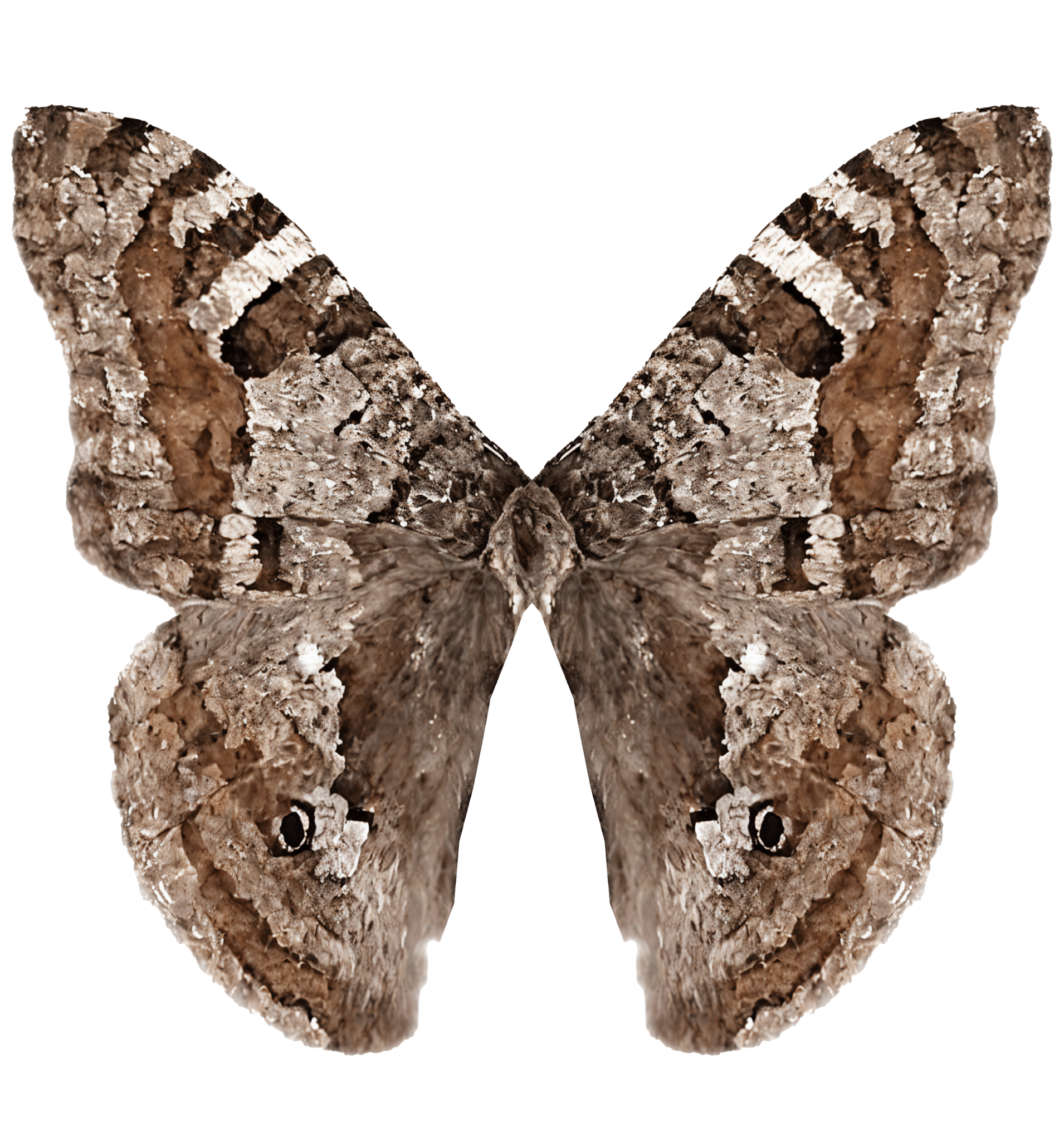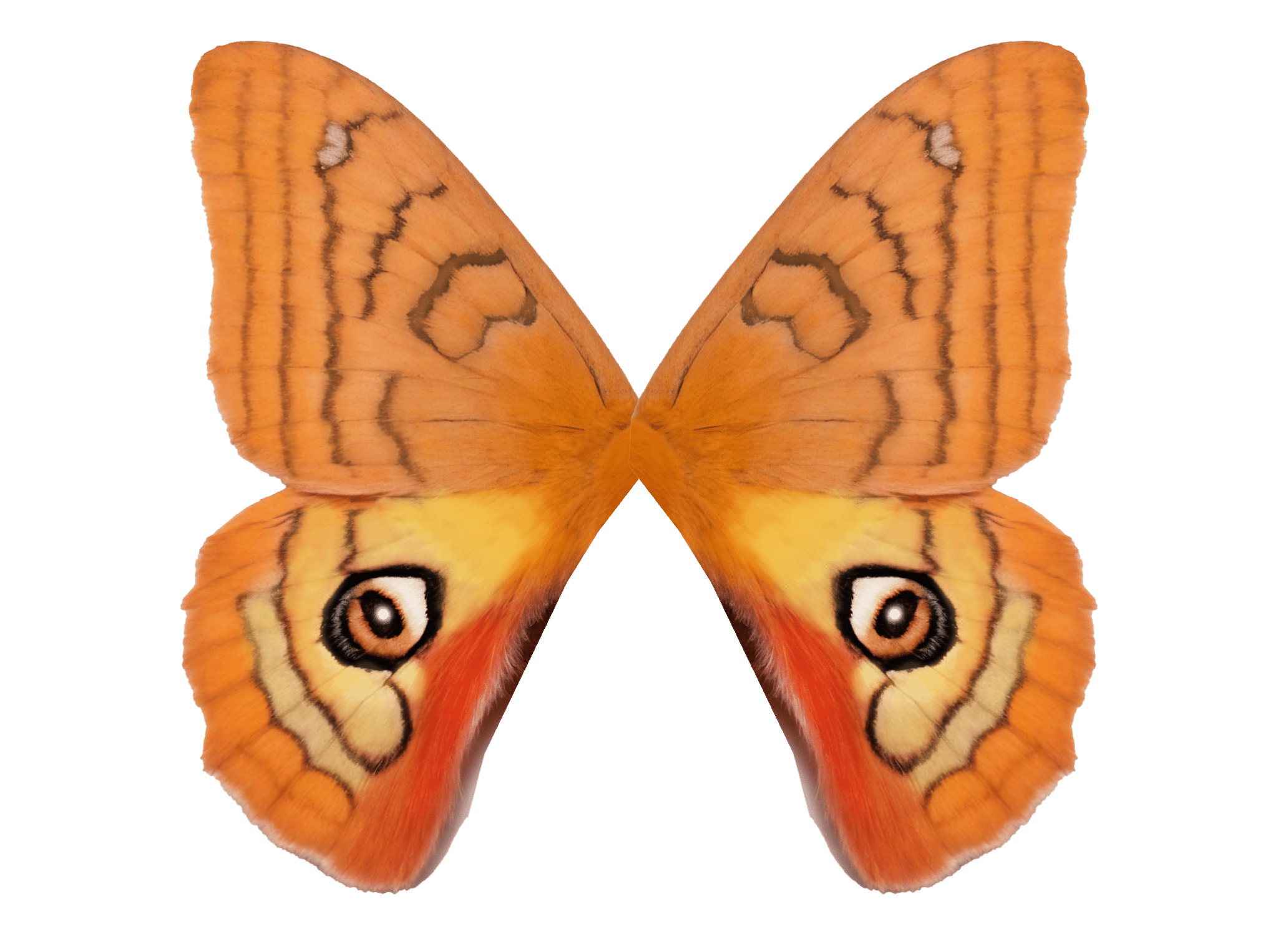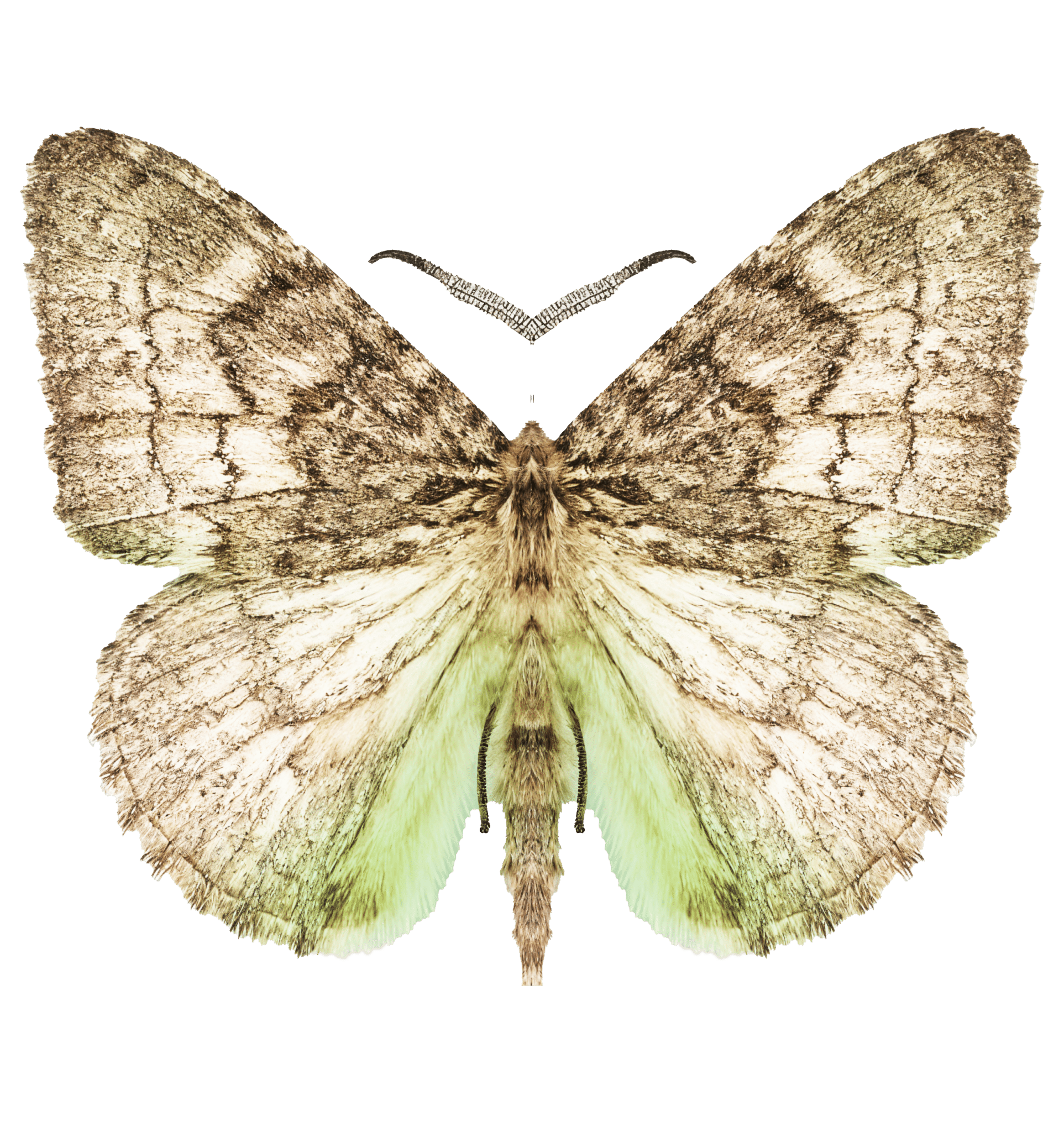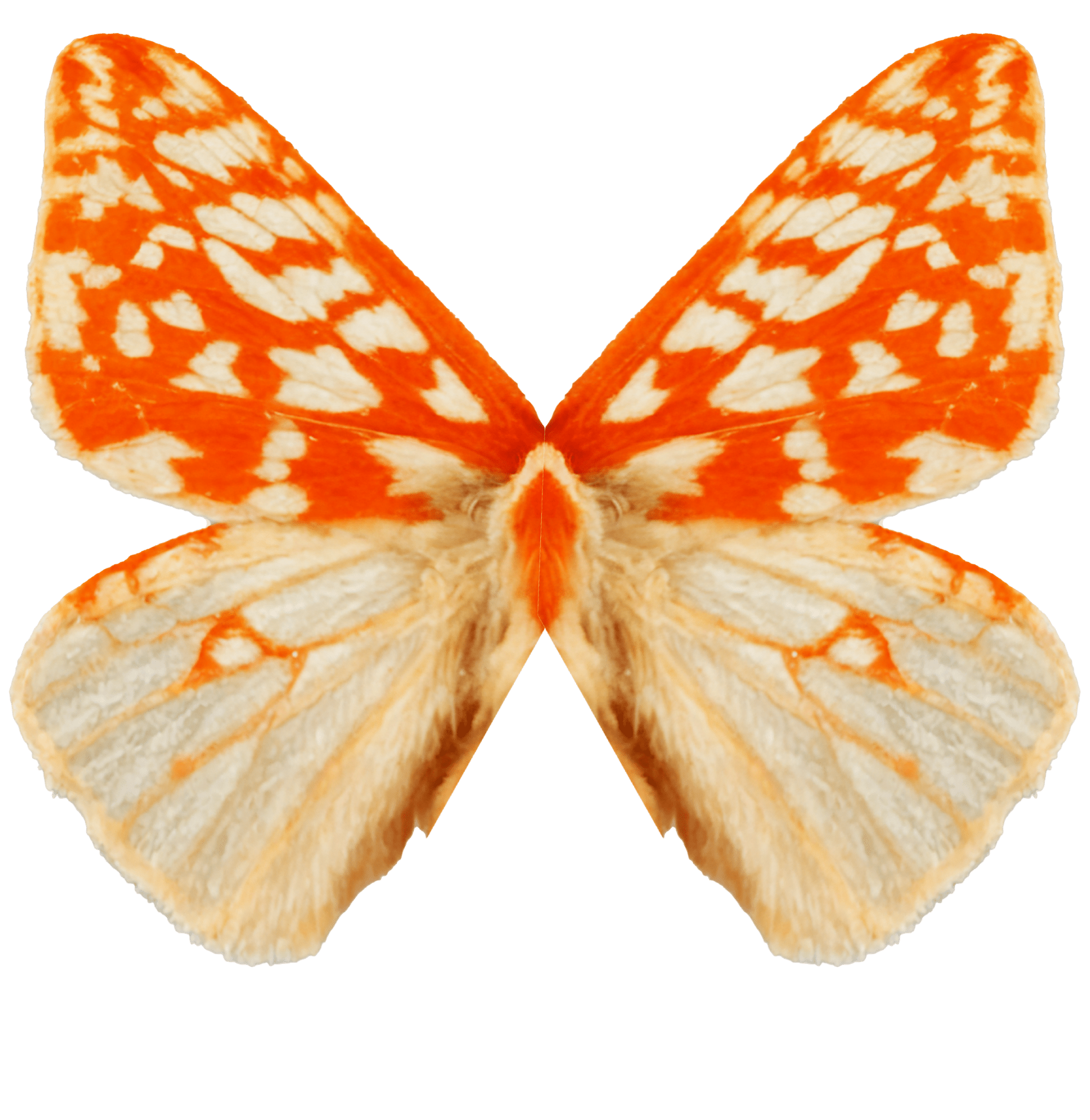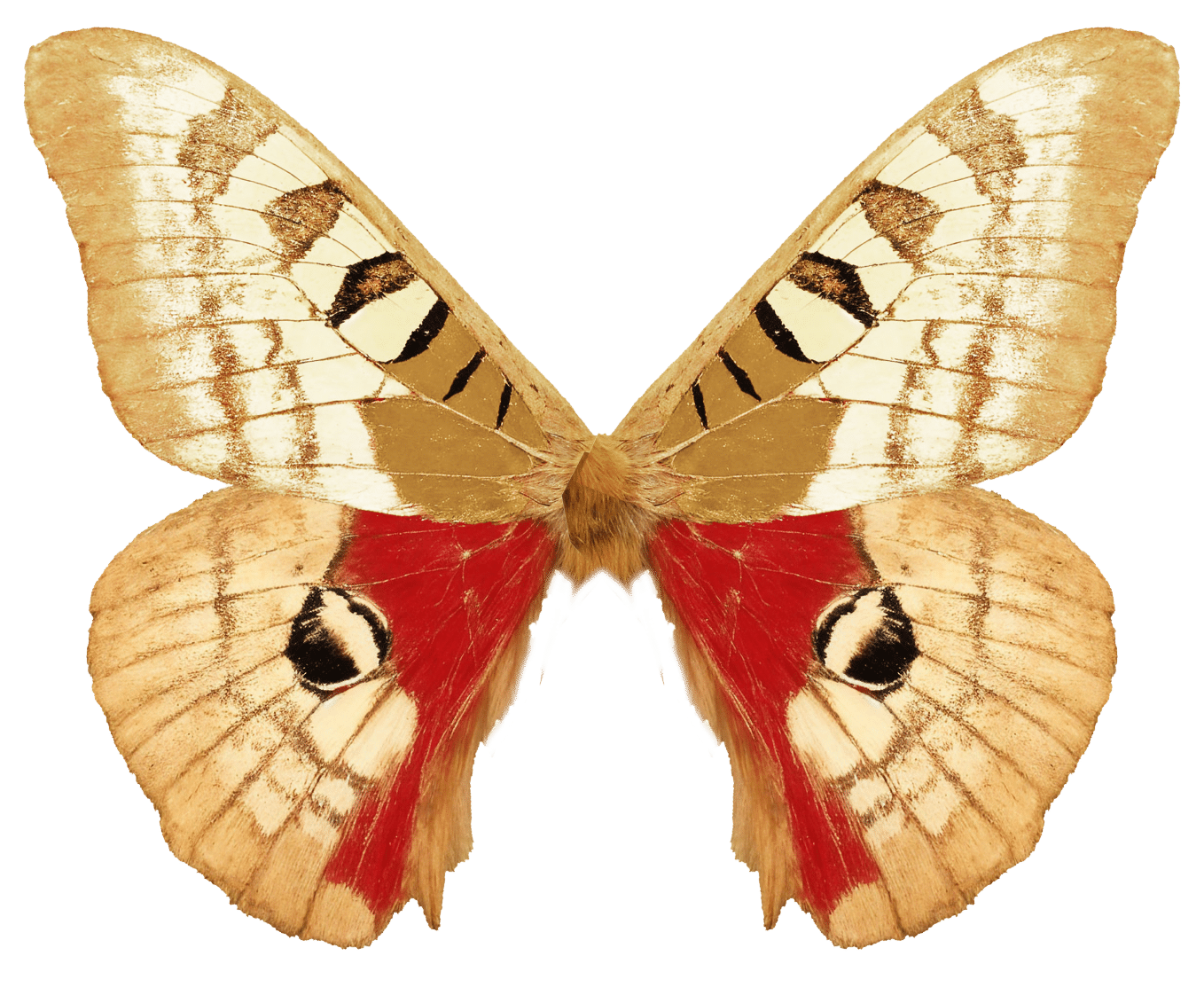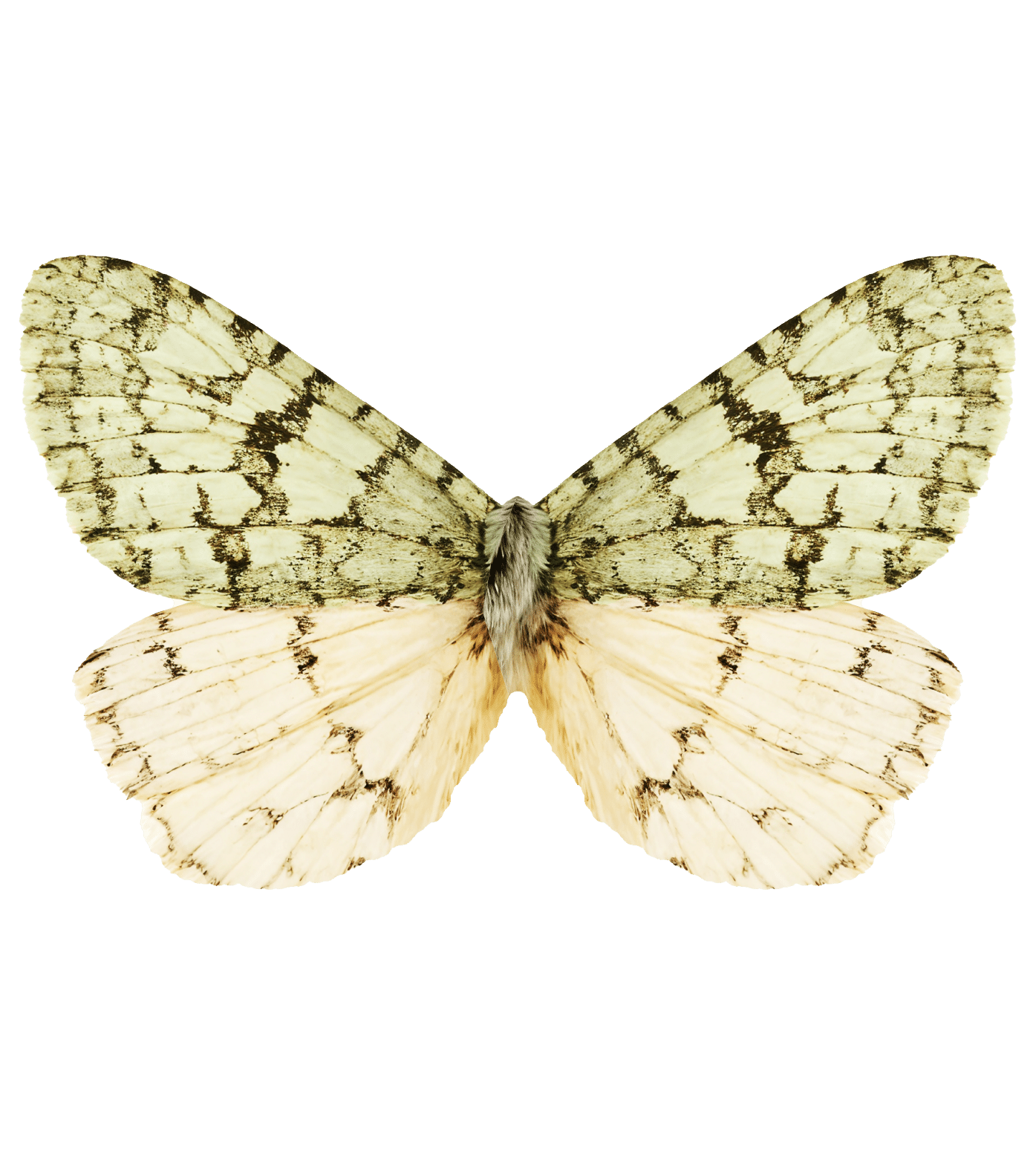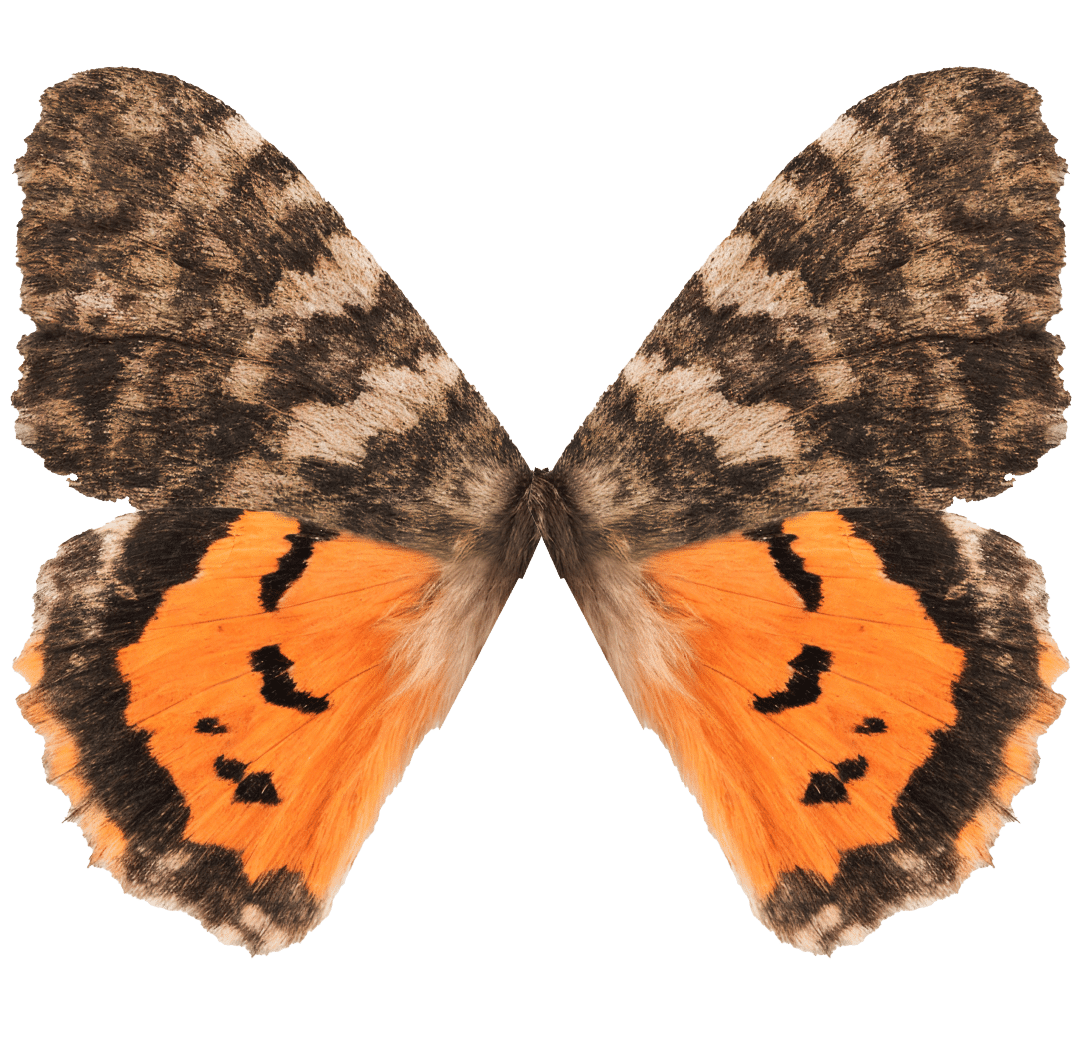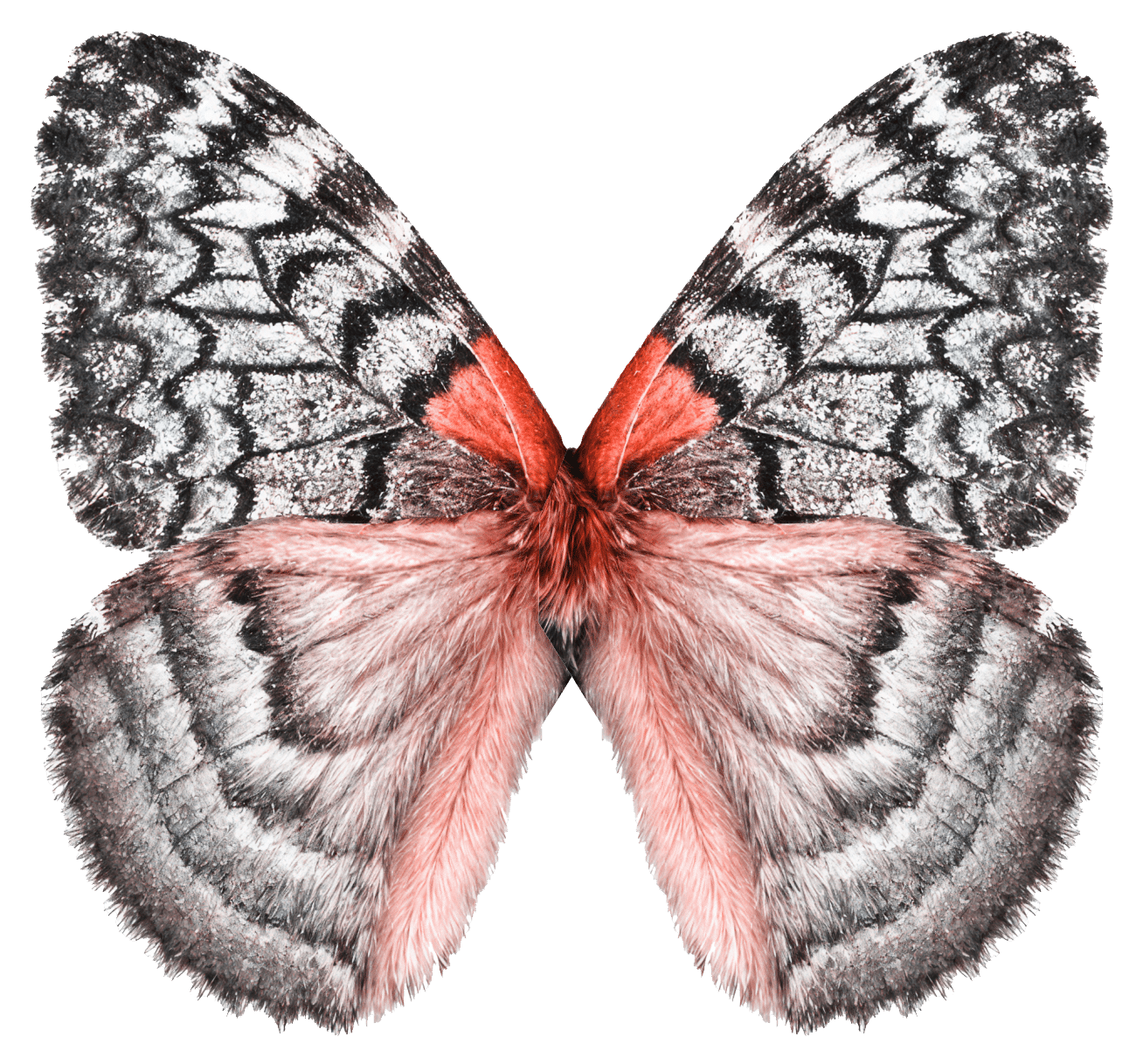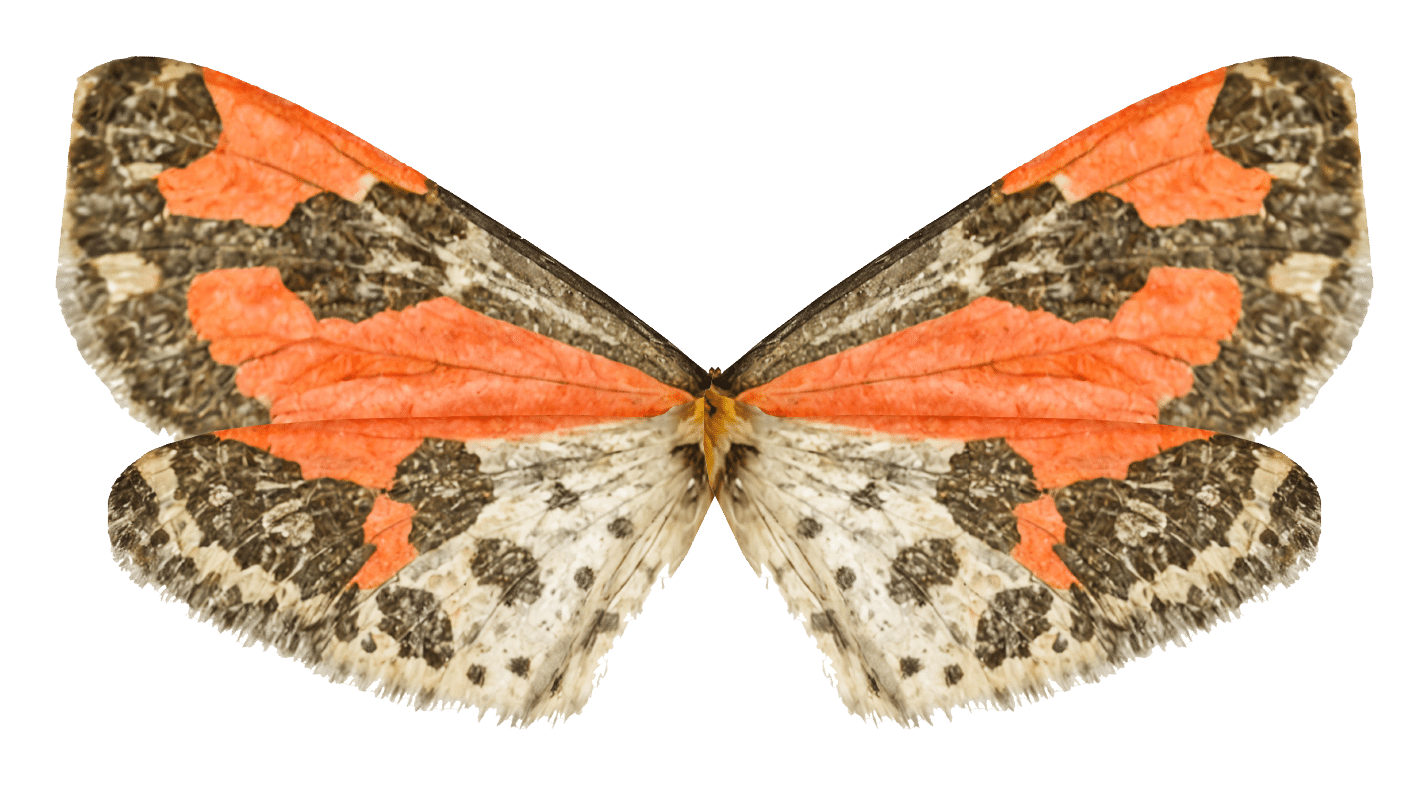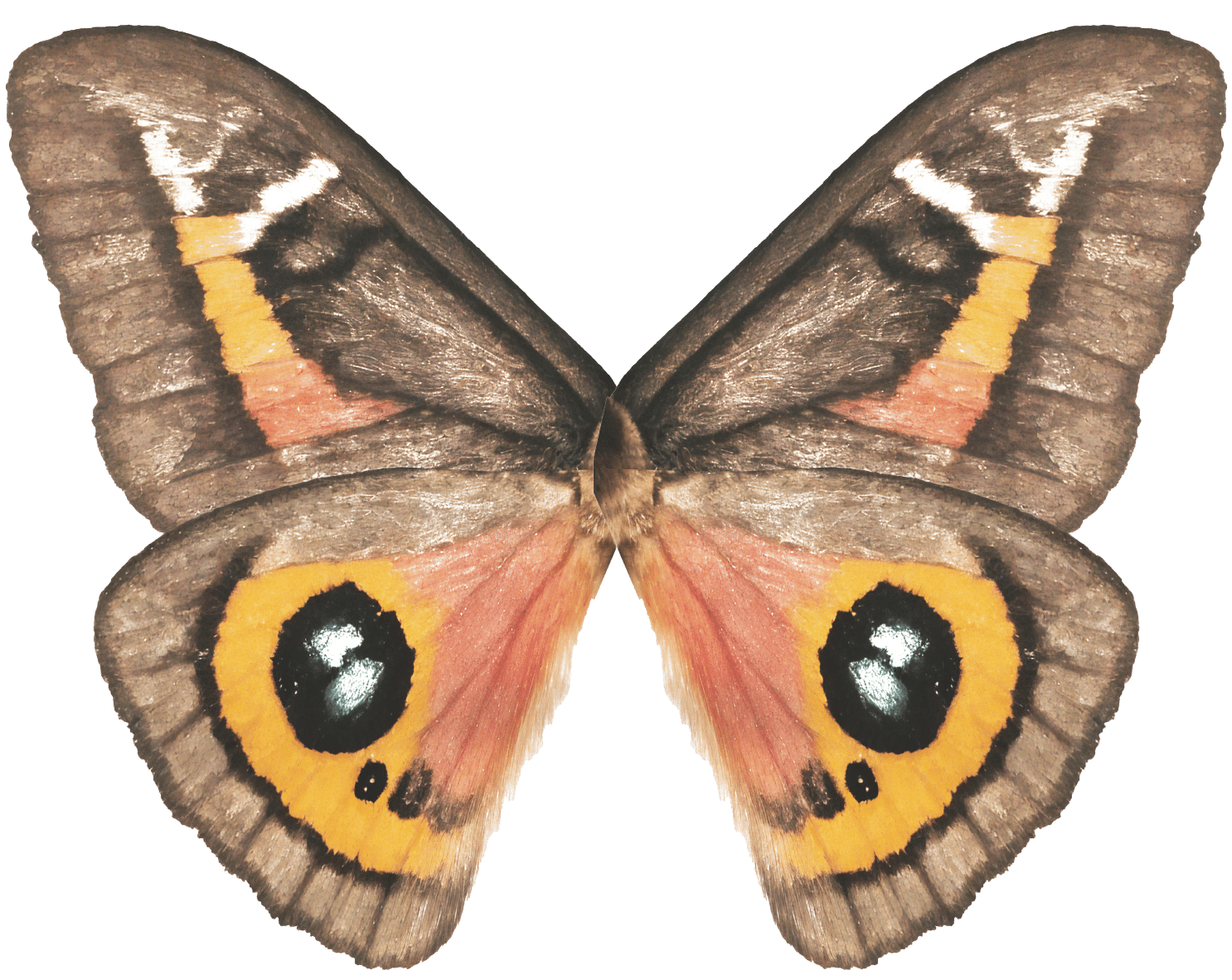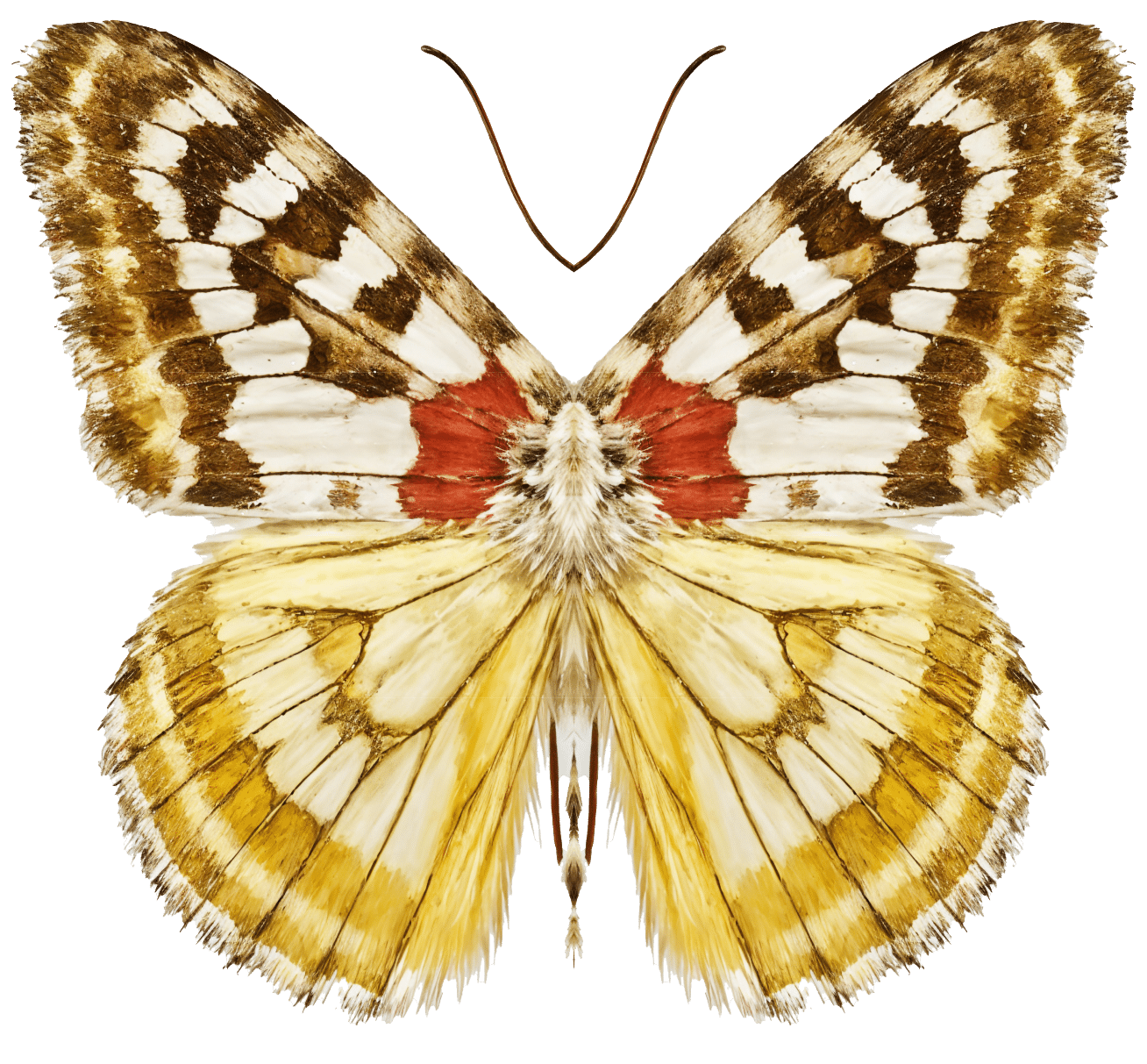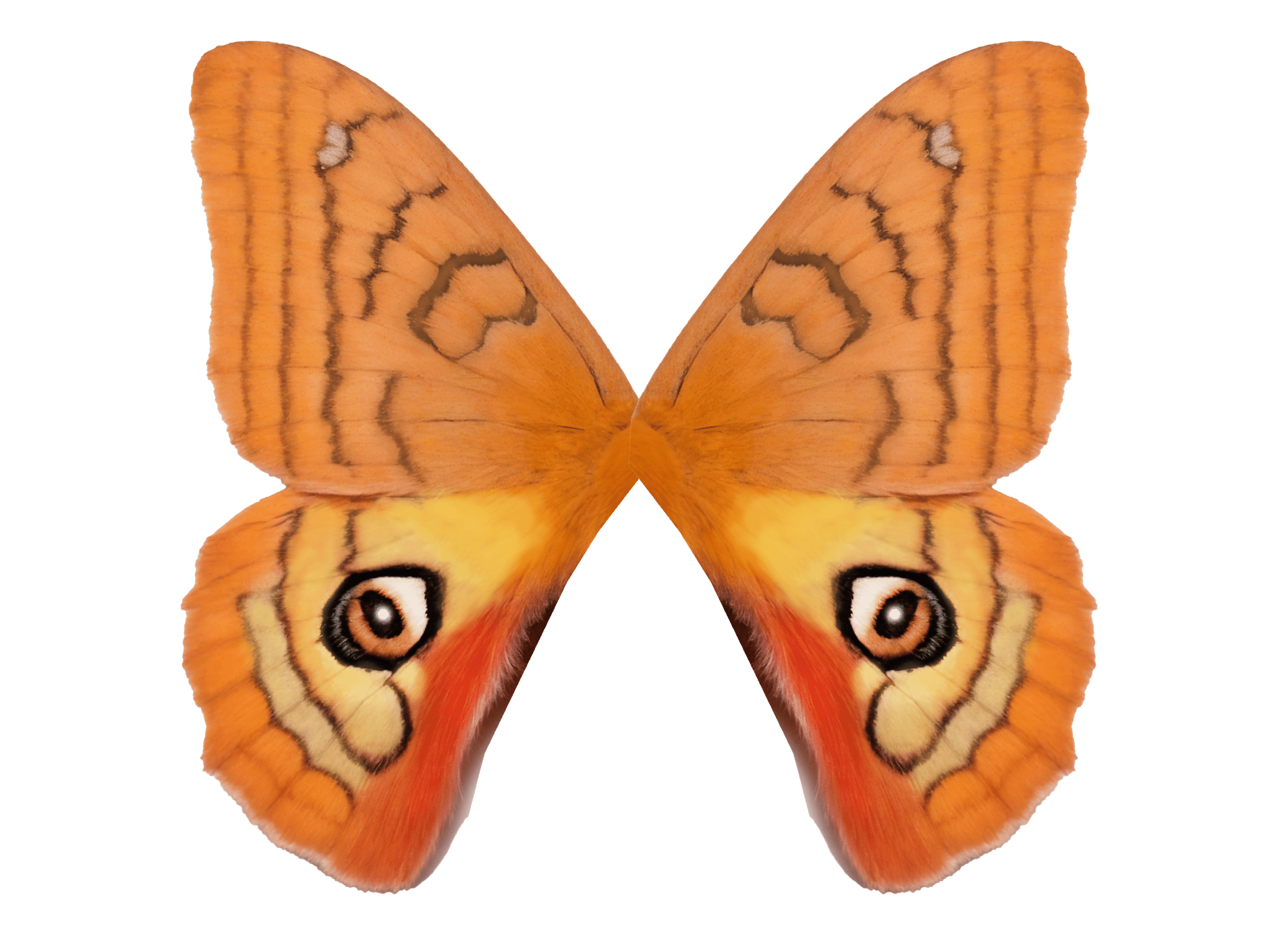The 24 moths hanging from the canopy that drapes over the Brown Promenade are larger than life. In this way ATLAS by Jen Lewin draws attention to the outsized impact moths can have on our environment as critical nocturnal pollinators. ATLAS will be on view at Discovery Green November 15 – February 16.
Moths are tiny invertebrates that support plant diversity and agricultural crops that require pollination after sunset. While some gardeners may consider them pests for eating their plants, a vast number of birds consider them dinner. The moths – and their larvae – are essential prey and often the primary food source for chicks. A decline in moth populations affects birds’ ability to reproduce. Fewer moths mean fewer plants and songbirds. Furthermore, like a canary in a coal mine, the decline in moth populations portends our own uncertain future.
Threats to moths come from the usual suspects: habitat loss, pesticide use and climate change. But moths are also affected by light pollution which affects their ability to navigate, mate and find food. There are a few things you can do to make the world a friendlier place for moths and other pollinators. One, you can turn off outdoor lights when possible and shade your windows when using indoor lights at night. You can stop using bug zappers which tend to kill benign insects while letting pest insects go. Finally, you can garden with pollinator-friendly flowers while avoiding pesticides and providing nest sites.
Would you like to learn about moths? Scroll over and click each of the 24 moths represented in ATLAS by Jen Lewin at www.discoverygreen.com/atlas.
Then, make plans to enjoy The Moth Project’s Houston debut at Discovery Green on February 15 from 7 – 8:30 pm. At The Moth Project two acclaimed classical musicians will bring the moths to life using songs as varied as Bach to Joni Mitchell and KISS as well as photography, video and dynamic motion graphics. By exploring themes of migration, seduction, death, transformation and hope, The Moth Project will have you understanding the science and mythology of moths as well as our connection to the ecosystem in novel ways. Pre-registrations are appreciated.
FURTHER READING: Bibliography and terminology provided by Jen Lewin Studios:
Bibliography:
- Macgregor, C. J., Evans, D. M., Fox, R., & Pocock, M. J. O. (2017). The dark side of street lighting: Impacts on moths and evidence for the disruption of nocturnal pollination. Nature Communications. Link
- Tallamy, D. W., & Shriver, G. W. (2021). Are declines in insects impacting birds? Frontiers in Ecology and the Environment, 19(3), 171-178. Link
- Wagner, D. L. (2021). Insect declines in the Anthropocene: Death by a thousand cuts. Biological Conservation, 241, 108327. Link
- Habel, J. C., Samways, M. J., & Schmitt, T. (2019). Mitigating the precipitous decline of terrestrial European insects: Requirements for a new strategy. Conservation Science and Practice. Link
- Longcore, T., Rich, C., Mineau, P., MacDonald, B., Bert, D. G., Sullivan, L. M., Mutrie, E., & Swaddle, J. P. (2018). Light pollution and its impacts on insects: A review and meta-analysis. Journal of Insect Conservation, 22(3), 223-234. Link
- Owens, A. C. S., & Lewis, S. M. (2018). The impact of artificial light at night on nocturnal insects: A review and synthesis. Journal of Environmental Management, 229, 112-121. Link
- National Moth Week (2022). Community science project focused on the documentation of moth species. Link
Lepidoptera Terminology:
- Eclosion – The process of an adult moth emerging from the pupal stage.
- Metamorphosis – The transformation that moths undergo, from egg to larva, pupa, and adult.
- Pupa/Cocoon – The protective casing in which the caterpillar transforms into an adult moth.
- Larva – The caterpillar stage of the moth’s life cycle.
- Oviposition – The act of laying eggs on suitable host plants.
- Nocturnal – Describes moths that are primarily active at night.
- Proboscis – The long, coiled feeding organ used by some adult moths to sip nectar.
- Tympanal Organs – Hearing organs that detect bat echolocation, aiding in predator avoidance.
- Pheromones – Chemical signals produced by moths, primarily females, to attract mates.
- Diapause – A period of suspended development that allows the moth to survive unfavorable conditions.
- Aposematism – Warning coloration used by some moths to signal unpalatability or toxicity.
- Scales – Tiny, colored structures covering the wings and body that create patterns and protect the moth.
- Venation – The pattern of veins in the wings, which helps in species identification.
- Non-feeding species – many larger species of moths Eclosion with out Mouth parts. These species only live 5-10 days.
Moth images provided by Jen Lewin Studio



